These Aren’t The Pizzas You’re Looking For
Japan is a country that is filled with many of its own unique and delicious foods. From okonomiyaki, to misokatsu, to the oh-so-well-known sushi, Japan has enough native dishes to keep you satisfied and your menu diverse. Along with many international foods from neighboring countries, you are not left wanting when it comes to figuring out what is for dinner.
However, there are times when a dish from back home is what you really want. You do a quick google search and find a local pizza shop. Browsing through the menu really puts it into perspective that this really is not the same pizza you know from back home.
Being a person from the area around New York and growing up surrounded by Italian families and Italian food culture, the first time I viewed a menu for pizza in Japan was shocking. From the various toppings that I would never consider for a pizza to the extreme pricing, this was one of the strongest feelings of culture shock that I experienced in my early times in Japan.
As an American, I knew Domino’s and Pizza Hut, as they are large franchises in the United States and, in a pinch, decent pizza for the price. The pizzas that were being offered by these familiar names were wild. Corn on pizza? That is a little strange, but okay. Margherita? I know that as a drink, but the ingredients are standard pizza toppings so that seemed okay. Tuna and mayonnaise? This is where the toppings began to stray from my idea of “regular” pizza. From fish, to potatoes, to lotus root, Japan has a unique take on pizza toppings for those who are bold and want to try something new.
Pushing past the unique toppings, what hits you like a brick wall is the price of a pizza in Japan. If you went into a local pizza shop back in the United States, a large pizza may cost around $15 depending on toppings and it is a HUGE pizza. Even going into a Domino’s or Pizza Hut, you could get two of their smaller versions of a large pizza for around $20. This is still a reasonable deal.
In Japan, the cost for one large pizza exceeds both of these price points by quite a bit depending on the style. If you order certain pizzas on the menu, you could end up paying almost $40 for one large pizza. For a quick and easy meal on a night when you do not feel like cooking, this is quite the price! I could never imagine spending so much for a pizza back home, especially from a big chain pizzeria.
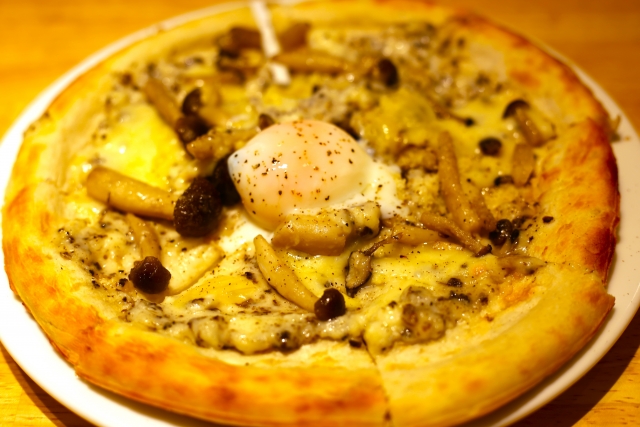
Photo by rontaka
Finally though, how does it taste? Well, for the chain stores Dominos, Pizza Hut, and Pizza La, it is average. It tastes exactly as what you would expect from these global pizza powerhouses. However, like back home, I always preferred the little mom and pop pizza shops on the corner. The place you would go into and get a slice and could tell they put care into what they were making.
I do like to search out these shops when I can and try their products. Of course, the pizza chefs here put that care and effort into their pizza, but it is not the same. Whether it be the toppings, the ingredients in the dough or sauce, or just the texture, it is difficult to match the essence of the pizza back home.
The verdict: if you have a real, burning craving for pizza while in Japan, the big chain stores can probably satiate that hunger. Just be prepared to pay the price. If you are someone like me, who grew up in an area that produces some of the best pizza in the world, this will almost never be worth it.
However, you can take this as an opportunity such as I have. Everything needed for pizza is easily obtainable in Japanese supermarkets. This is a chance to become your very own pizza chef and share with your friends and colleagues what you think is the best way to make a pizza!
Editor’s Note: As a connoisseur of Japanese pizza, I feel compelled to add that 1) Korean Bulgogi pizza, a staple of Domino’s, Pizza Hut and Pizza La, is great and absolutely worth it, and 2) if you can, get carry-out instead of delivery at the big chains, as they often have some good discounts and deals that offset the higher prices. Enjoy!
Photo Credits:
Additional photo by rontaka
All other content (text) created by the original author and © 2023 MUSUBI by Borderlink
You’ve probably heard many people talk about the amazing train system here in Japan. From the JR trains to the subway or the amazing Shinkansen (Bullet Train). But unlike commuting on trains in other countries, there are some rules that might be familiar to you and some that aren’t but are necessary to follow in Japan if you don’t want to disturb others around you. Whether you are using the trains during rush hour or during the day when it is not quite as busy, there is organization among the chaos due to the train etiquette in Japan so let’s go through a few of the ground rules.
Staying Quiet
Out of respect for others, you should generally be trying to keep quiet on the train in general. For example if you are perhaps commuting with a friend and you want to talk to them, you can but you should try to keep a quiet voice so as to not disturb those around you. You will actually often see Japanese people who are commuting with friends but they still sit in silence for the duration of the ride. Although it is not necessary to do this, it just gives you an example as to how seriously people can take this rule here.
When it comes to using your phone on the train, it is a faux pas to be on a call in the train since it can disturb those around you. You will additionally see signs to keep your phone on “manner mode,” which in English is the equivalent of keeping your phone on vibrate or silent, so if you do receive a call, it does not disturb those around you. If you follow these rules though it is fine to use your phone on the train and you’ll find that is what most people do on the train to kill time on their commute.
Sitting or Standing
If you’re lucky enough to get a seat on the train, just be mindful of other people’s space either next to you or standing in front of you. It may be best, if you have a bag, to put it on your lap instead of the floor to give the person standing in front of you enough space to stand and hold onto the handlebars. You also should be mindful not to take up more than one seat.
If you are not so lucky and have to stand on the train or you just prefer to stand, you may need to switch your bag to your front instead of your back. You may notice others with a bag make this switch when it is busy. This allows people to squeeze behind you to get past you, without having a bag blocking their way when the train is busy. Additionally, although the crime rate is very low in Japan compared to other countries, this also helps you keep an eye on your belongings in big crowds when the train gets busy.
Food & Drinks
When it comes to having food and drinks on the train, it is okay to have a beverage on the train. However, you are not permitted to eat on the train due to the potential mess and disturbance it could cause others around you. Whether that may come from the smell of the food, the noise and moving around eating may involve, etc.
Lining Up
Before getting on the train, you’ll notice Japanese people always form a neat line. There may be indicators on the ground showing you where to line up, but if not, it will be on the left and/or right side of the door of the train car doors. The door location will be indicated on the ground. The reason you line up on the left or the right side and not in the middle is because the middle is supposed to be reserved for those getting off of the train. After waiting for the passengers to get off, the 1 or 2 lines can then start making their way into the train one by one.
Priority Seating
You will notice some seats on the trains are reserved for priority seating for people who are pregnant, elderly, with small children, or with disabilities. Of course these people are not always present so when they aren’t, it is okay to sit down. But if any of the above were to become present, you should offer them your seat even if you aren’t in priority seating, but especially if you are.
Women-Only Cars
If you are taking a train early in the morning, and you walk into a car and you see nothing but women, it’s likely because you have accidentally walked into the Women Only car. One train tends to have at least one women-only car so they may avoid close contact with men on the packed trains in the morning. However, after a couple of hours in the morning, it is no longer a women-only car. You only need to be mindful of this if you are getting on the train during rush hour in the morning. If you are a male and happen to accidentally walk into one, you don’t have to exit the train, you can just go through the door in the train to the next car, so there is no need to panic.
The trains in Japan are extremely convenient whether you are taking the train in downtown Tokyo or perhaps a more rural area, the trains here run like clockwork regardless. I won’t say there are never delays but they are quite rare and the system really is something you can rely on as long as you take some time to consider those around you on the train.
Photo Credits:
All other content (text) created by the original author and © 2023 MUSUBI by Borderlink
One of the most amazing wonders of nature is the ice cave. Incredible to look at and even better to explore, they are must-visits for spelunkers and other cave enthusiasts. But what exactly are they? Well, for one thing, they’re not made of ice! Rather, they are made by volcanic movements. Yes, they are regular ‘ol caves, but it is from their usage where they get the name. More on that in a moment.
The Narusawa Ice Cave in Yamanashi is a very popular and easily-accessible ice cave that is actually a lava tube. Absolutely beautiful and totally worth a visit, it’s about a 2 hour drive by car from Tokyo. It is located in the heart of Aokigahara Forest at the baseof Mt. Fuji.
Around 1,200 years ago, a large eruption from Fuji resulted in the formation of countless lava tubes across the surrounding areas. Narusawa is among them, and is one of the three largest tubes near the northern foot of Mt. Fuji (the other two being Fugaku Wind Cave and Lake Sai Bat Cave).
As the name implies, the Ice Cave was originally used as a location for storing ice during the early 1900’s, before the advent of refrigerators. Locals used Narusawa Ice Cave and the nearby Wind Cave as natural refrigerators. They carried blocks of ice cut from the lakes in the winter down into the caves. Seeds and other perishable items were stored in the caves along with the ice to keep them fresh. The caves’ unique structure allowed ice and other items to remain cool for long periods.
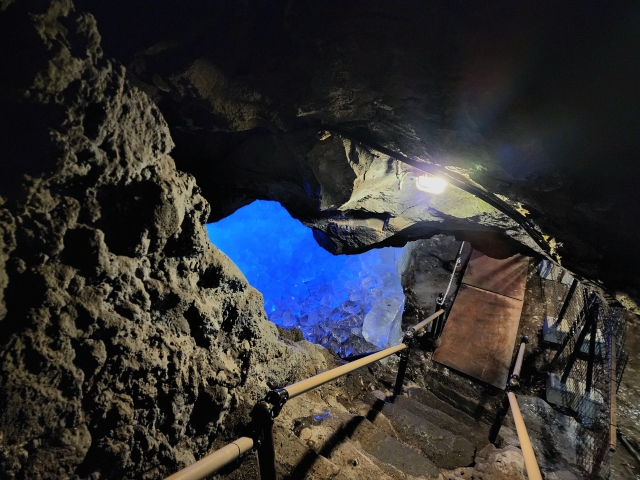
Photo by shigekun
Today the paths of the cave are still lined with natural ice formations, even in the heat of the Japanese summer. The 150-meter circular route descends 21 meters, beneath low ceilings and down very slippery steps. Mind your head as you squeeze through the lava tunnels, and keep hold of the handrails when climbing the stairs.
The spring has becoome an increasingly popular time to visit Narusawa Ice Cave, particularly as rising visitor numbers in summer have cause many to visit earlier in the year. Summer remains popular though, as after all- what better way to beat the heat than with a giant underground fridge?
And now that you too know about the Ice Cave of Yamanashi, be sure to visit- it is a truly unique experience!
Photo Credits:
Additional photo by shigekun
All other content (text) created by the original author and © 2023 MUSUBI by Borderlink
Top photo: 78design on PhotoAC
If you’re planning to move to Japan, it’s good to be prepared and do some research first. Get to know the cost of living in Japan, and that if you want to live anywhere near a city center or major station, you will be shelling out more in rent. The cost of living in Japan is said to have long been one of the highest in the world. Although the country has become more affordable in recents years, it’s still not the cheapest place to call home.
As a foreigners living here in Japan, it is common for many of us to send money to our loved ones back home, pay off debts from university, etc. That’s why sometimes it can be very difficult to save money. Coupled with everything here in Japan seeming expensive (food, housing, transportation and so on) it can be easy to feel overwhelmed.
But the truth, as those of us who live here for years come to learn, is that Japan has as many deals, shortcuts and tips for saving some extra yen as anywhere else. This is especially true when it comes to food. One of the most important needs of every person is food. We need to eat to live, after all!
Here are some ways I have used to minimize expenses on food. It should be noted that these are tricks I used in the early days, before truly settling in; once you have accumulated savings, you will be able to enjoy a little more luxury in all aspects of life, including eating (everyone deserves to try Kobe Beef at least once in life, after all). But for the newcomers- those just arrived in Japan or those coming soon- these are the tips that will get you by.
1. Shop near closing time
The best time to go to the supermark if you want to get a discount is at the evening. Most supermarkets will start adding a discount sticker on food products. Chances are if you go shopping anytime after 6 pm, you’ll see a staff member going around putting stickers from around 7:00 pm for a 10% discount, then after one hour, they change it to 20%. Starting from 8:30 – 9:00 pm, they put between a 30-50% discount sticker on.
The discounted items will generally be anything pre-made or prepared on the day (bento, meats, vegetables) with a short shelf life, and they can get cleared out pretty quickly as there will be many other shoppers hovering around waiting for that perfect deal. You can easily get double the amount of items you would earlier in the day, at the same cost.
2. Make a shopping list
While it’s fun to go and just grab whatever you see during the above, sometimes you may end up with more of something than you’d actually eat (discount karage is great, but you won’t want to eat it 5 nights in a row.) So be sure to make a list of things that you need, and try to buy enough for several days to a week. There will always be time to splurge on something new and exciting once you’ve gotten the basic weekly shopping plan down.
3. Get point cards and start racking up points
Having a point card will help save some money, sometimes give you coupons, and you can save up points to use in exchange of money. Always be sured to make a point card where you often buy your food at supermarket, and remember to use it. That way, you get points for every purchase, and when you accumulate enough, you can use them for other payments.
Note that some cards with be specific to one store chain, while others can be used across multiple shopping venues (such as a Ponta or T-Point card). In this modern era, some ‘cards’ are digital, so always keep your phone handy if the ‘card’ is an app.
4. Actual Cooking
As often as possible, try to cook at home over buying pre-made meals at convenience stores. You can save more money when you cook your own food, and you’ll often be able to put together some healthier meal options. If you cook 1 cup of rice alongside vegetables and fish/meat, this will cost much less. You can also prepare food for several meals all at once and refridgerate, which makes it practical as well. For a little more about cooking on the cheap, see our guide here.
5. Using the Kakeibo method
Kakeibo is a Japanese art of budgeting and saving money. It involves keeping a journal of all your income and expenditures so that you can see where you’re spending unnecessary money. It’s the ultimate form of household financial management, and a must-do when you (hopefully, some day) have more than one mouth to feed!
Photo & Information Credits:
Top photo: 78design on PhotoAC
Some information in this article was sourced from www.webmagazine.com. All other content (text) created by the original author and © 2023 MUSUBI by Borderlink
Top Photo: photoBさん on PhotoAC
Now, I know what you’re thinking. When I’m in Japan, what am I going to do about getting my hands on a decent latte? Will have need to buy an espresso machine? Import one? Build my own? Where should I go to pay money for one? Are they all the same? Do they taste like Japanese seaweed? Is my café latte life over? Should I just go ahead and begin that heavy metal detox!?
And the answer is yes! And no! And all things in moderation. Let me start from the beginning. I know what your thinking. When I’m in Japan, where are some good places to get a decent cup of joe? Well, luckily for you, I’m here to give you the skinny you need! The detox will go a long way in that, too. Trust me.
MINI STOP
Okay first, let’s talk about the konbini or convenience store. Your down-the-street-quicky from heavens-know-who. And our first stop along the way is MINI STOP.
As far as a café latte goes, don’t get one here. Straight coffee, fine. But they don’t actually have machines for café lattes. If you order one, it’s small for the price and the attendant will then disappear back into a closet and re-emerge a minute later with a paper cup half full of microwaved liquids- a semi-viscous, white cream. Then you go to the coffee machine and fill it with, perhaps, espresso. I think it is espresso, but the whole thing is odd. I like Mini Stop above the other convenience stores, but for this, no. If it were 100 yen, sure. But I think it’s more like 170. And on the small side. But Japan likes that sort of thing- compact and economical!
7-ELEVEN
Our next coffee stop is 7-ELEVEN.
If you must, a quicky at 7-11 is doable. You can get an M-sized café latte for a slightly overpriced 230-ish yen. It’s bigger than the Mini Stop one and is middle-of-the-road quality. Their Iced Latte is perhaps the better choice. You’ll buy a tall plastic cup already full of ice over in the freezer section and then take that to the machine. It’s a reasonable choice if you haven’t other choices.
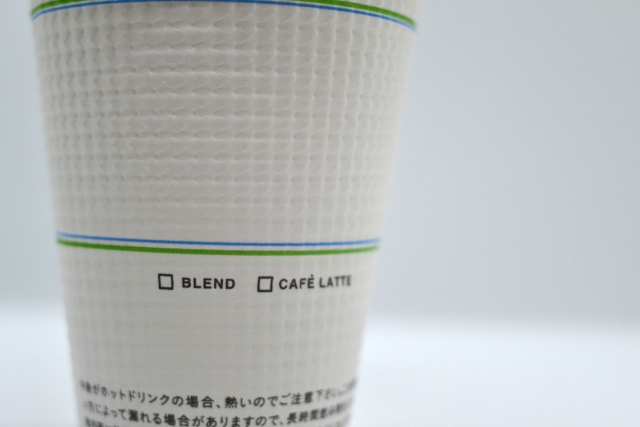
Photo by codino
FAMILY MART
Slightly ahead of 7-Eleven is FAMILY MART.
Family Mart sells an L-sized café latte for 210 yen. It’s an okay size. The machine will fill it up nearly to the top with a good 1.5 cm of pure foam. I do think it’s a bit pricey for what you get, but I prefer it to 7-Eleven’s version. Seems nobody wants to do others any good anymore. Don’t you miss those days when you could just buy something without being ripped off? I guess that’s how they are doing it. Nobody remembers those days. You get a new normal every 10 to 20 years and nobody stops to think “Now wait a minute…”
Family Mart also has a rack of spices to add to your coffee. Cinnamon sugar, caramel, vanilla, that sort of thing. Quite low quality, but it’s a no-cost option. The ice coffees are available in the freezer section as well. Just buy an L-size for 269 yen. A bit staggering, I know. But this is a bit bigger and a bit more expensive than 7-Eleven’s version. You’ll want to wait for the ice to melt about half way, otherwise you’ll be finishing your drink within a minute.
LAWSON
And lastly, we’ll touch on LAWSON here.
This is where I recommend your insta-cheap-ish coffee desires to be fulfilled. To me, Lawson coffee has the best taste. Their Medium hot café latte is price fixed to all other offerings. It’s most comparable to Family Mart’s L. They do offer the MEGA HOT though. This is MUCH larger than pretty much everything else. Especially the cup. This cup is filled about 60% of the way at the machine (yeah bit of a joke, I know), but it’s still significantly larger than say, a Family Mart L.
However, it is NOT price-efficient. At a mega 360 yen, it is insane when compared to what we used to enjoy at American gas stations on a freezing, sleety day. All those scalding hot, rich cappuccinos in those insulative cups for a few quarters. If the Japanese knew about that, there would be a revolution in the morning. Actually, there wouldn’t because no one has the energy or time anymore for that sort of thing, but at the very least there’d be complaints on social media. Make way for the future!
In any case, it’s not really worth considering the MEGA HOT. Apparently, a lot of Japanese feel this way, too. So Lawson often has sales on their MEGA HOT which isn’t hot either. So look for these. I’ve seen them going for 300 yens and also price matching to their L size, so you could up-size for free during their Happy Hour, month-long sale. They also have a MEGA size for their ice coffee. Don’t know if it’s called MEGA ICE.
That’s the konbini for you. None of the hot coffees are actually very hot, by the way. But nobody wants to be at the center of the next “somehow this scalding hot coffee just ended up in their lap, your honor” scandal.
Cafes
And this brings me to other cafes. The big busy-ness staples being Starbucks, Dotour, Tully’s & Excelsior. My only recommendation here is go to Tully’s. It seems the most honest. Also, Tully’s gives you hot drinks most of the time, unlike jokingly lukewarm Starbucks. The last one I got was even making me change hands! The quality is a definite step up as well. Dotour’s hot drinks are also fairly hot, but their menu can be a bit underwhelming. Obviously, these brands are going to differ much more in what they offer and also they are 2 to 3 times the price of a wham-bam over-priced cheapo version.
Conclusion
In the end, if you want a quality café latte, it’s safe to just go with mom & pop cafes. Occasionally they can be even more expensive than corporate brands, but you always get the better stuff. Corporations are physically bound to a single aim: profit. It is their structure. Yes, people within them may want to balance and bring a human touch back into the machine, but they are barred in by the very nature of publicly traded, non-living entities. A mad world where cost-cutting is stormed upon by all means and methods which can be covered up enough to distract away customers’ attention from the underlying horror show. Because then, there would be lawsuits and multi-million dollar fines. All of which would reduce by 10s of percent how much they saved doing their cost-cutting practices!
Uh, sorry. Got a bit off topic there. Bottom line, if you just need your fix of caffeine, anything from a vending machine canned coffee to a convenience store special likely has it. When in doubt, take a gamble! One of them will pay off. Well that’s enough out of me. I hope to have allayed some of your concerns over getting a buzz in Japan!
Photo Credits:
Top Photo: photoBさん on PhotoAC
Additional photo by codino
All other content (text) created by the original author and © 2023 MUSUBI by Borderlink
Top photo: ERINGI51 on PhotoAC
Want to live in a palace, then Japan is the place for you!
I’m sure everyone has dreamt what it would be like to feel like a royalty and
experience living in a palace. Even if it only for an overnight stay.
Japan is known for its beautiful heritage sites that provide people with an
insight into its wonderful culture.
There are so many palaces ranging from
Odawara Castle (where you can learn about ninjas and samurai and their
history), Kinkakuji temple also known as Golden Pavilion (it’s a three-floor
structure that overlooks a large beautiful pond with the top floor covered in
gold leaf coating) and the Imperial Palace (which is home of the Emperor of
Japan that also contains a museum section for viewing) just to name a few.
These castles have very beautiful architectural designs but they are not
only known for that, the heritage and story behind each is unique and
fascinating.If you’re someone who likes experiencing different cultures and
has an appreciation for traditional things then visiting the palaces here is a
great way to start.
Where you could actually be staying!
So…. I wasn’t wrong when I mentioned you’d have the opportunity to stay in a
palace! This is actually called a Leopalace.
For foreigners it’s not easy to rent apartments or houses in Japan. They are
very strict especially when looking to rent a house from a Japanese. These
leopalace apartments are owned by an agency that specializes in renting to
foreigners. You don’t have to speak Japanese as they also assist in
English.
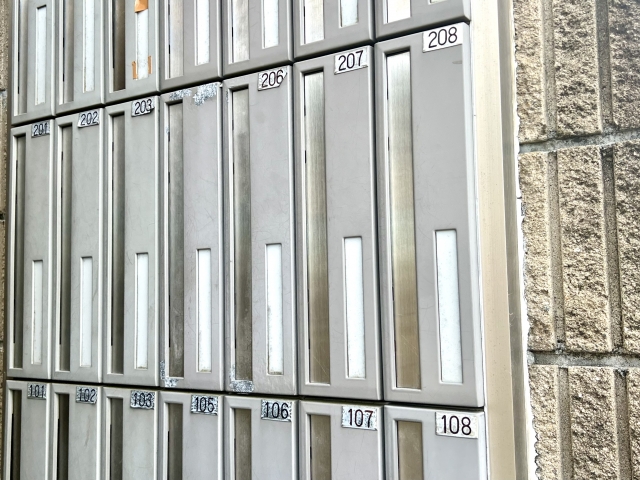
Photo by UMAROCK
The apartment comes semi-furnished usually with a washing machine,
fridge, TV, cooking stove and internet access. The rent is usually expensive
and utility services connection such as water, electricity and gas are usually
done with the particular companies on your own.
A hefty deposit is needed as you would think the place your renting is the
actual palace where the Emperor stays. The deposit is about two months
rent depending on the location, in the event of any damages caused. Key
money is usually paid to the owner to thank them for renting you the
apartment, this is customary (not always required with Leopalace renting).
Lastly, a guarantor is required when renting an apartment in Japan (this
has to be a Japanese, but luckily there are agencies you can pay to take on
this role).
As stated earlier if you like experiencing new cultures don’t let this be a
deterrence because the pros far outweigh the cons. One such pro would be
avoiding the hassle of purchasing furniture and trying to get them sold or
dispose of when leaving. There is also customer care service available in
English to assist with any apartment issues such as repairs.
The Japanese Way
Sometimes it’s good to enjoy the simple things in life. Big is not always better!
Great satisfaction can sometimes be attained from something small and
simple. The apartment is small but it comes with all the things you need.
You’re just required to get a futon/mattress to sleep on and of course your
clothes and toiletries. Having a large space would only made you want to
buy items to fill the space which you don’t necessarily need. Sometimes
this results in clutter and having to clean a lot.
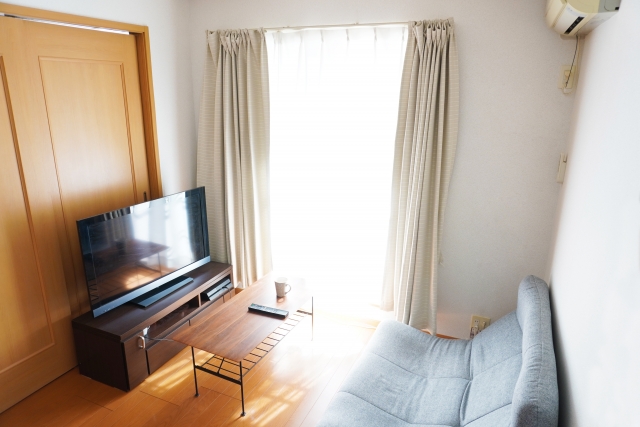
Photo by ojisan200
When I first arrived in Japan, I was quite surprised when I saw the size and
was a bit worried as I wasn’t accustomed to living in such a small space.
The first impression people have when viewing a space small is that it
restricts them. If you’re here for cultural exchange by yourself then it won’t
be a problem.
Fortunately, there are other housing options available with larger space so
no need to worry! I only mentioned this one in particular because it’s the
simplest and easiest housing available especially for a new person just
entering the country. It would also give you a better sense of the kind of
space you so desire when looking to move into something bigger.
Looking to relocate in Japan to a Leopalace or other kind of apartment? Borderlink can support you in your relocation when you join as an Assistant Language Teacher! Apply today for more information!
Photo Credits:
Top photo: ERINGI51 on PhotoAC
Additional photos by UMAROCK , ojisan200
All other content (text) created by the original author and © 2023 MUSUBI by Borderlink
No that’s not a typo, I really do mean wandering. One of the best things about living in Japan is that you can take your time and really explore the sights and sounds here. To be honest, this might be one of the main perks many come here for, but then many just stay with the basic touristy places.
Me? I went a different route, a less-traveled one. Why? Because most of the popular places have too many people. While I don’t mind it too much, I find rest and peace of mind in nature. So decided that I would find nature even in the bigger cities, both for peace of mind and for my own mental health.

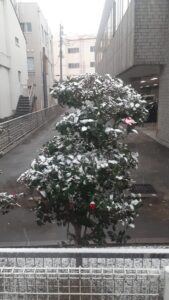
The only problem is how to get around on your wonderings here in Japan. Sure you can hoof it, or take public transport, but those are very limiting in where you can go. Then why not get a car? Well the costs are high, especially in bigger cities.
So what to do? My answer was to go for a cheap bicycle. A nice little single speed bike like you can see in many anime series. This option is great as it helps with both extending your range, as well as giving you a little more exercise.
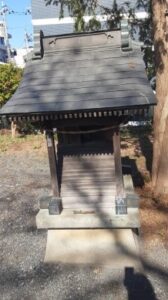
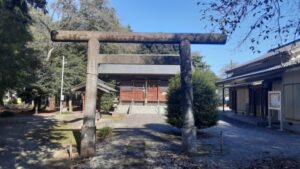
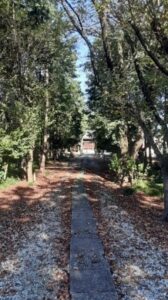
While I lived on the main island I would visit parks and other hidden nature spots, like local shrines.
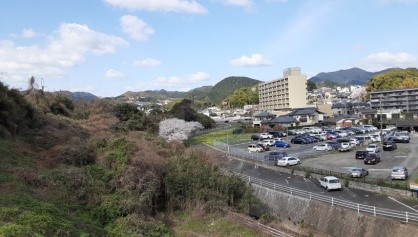
When I moved to a smaller town, it allowed me to travel so much further (while getting some truly interesting reactions from the locals when they heard where you went).


I took a ride to a town close by, and on the way there I was greeted by truly beautiful forests.


I also went to the beach to do some fishing (didn’t catch anything).
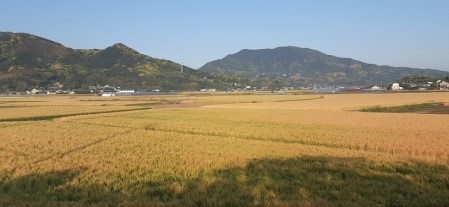

And the way there had some breath taking fields.


One thing that I found interesting was that the rivers and waterways have so many fish in them.
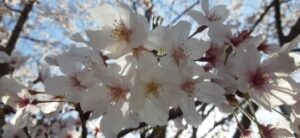
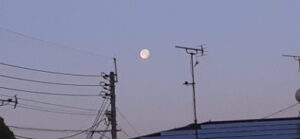

So when you come here (or if you are here and have some free time), please consider wandering about Japan, to see more of the hidden beauty all around. The most important part is to go out and experience Japan, both for the memories as well as for the sanity points it recovers.
Photo Credits:
All additional images taken and provided by Timothy Horn, used with permission.
All other content (text) created by the original author and © 2023 MUSUBI by Borderlink
